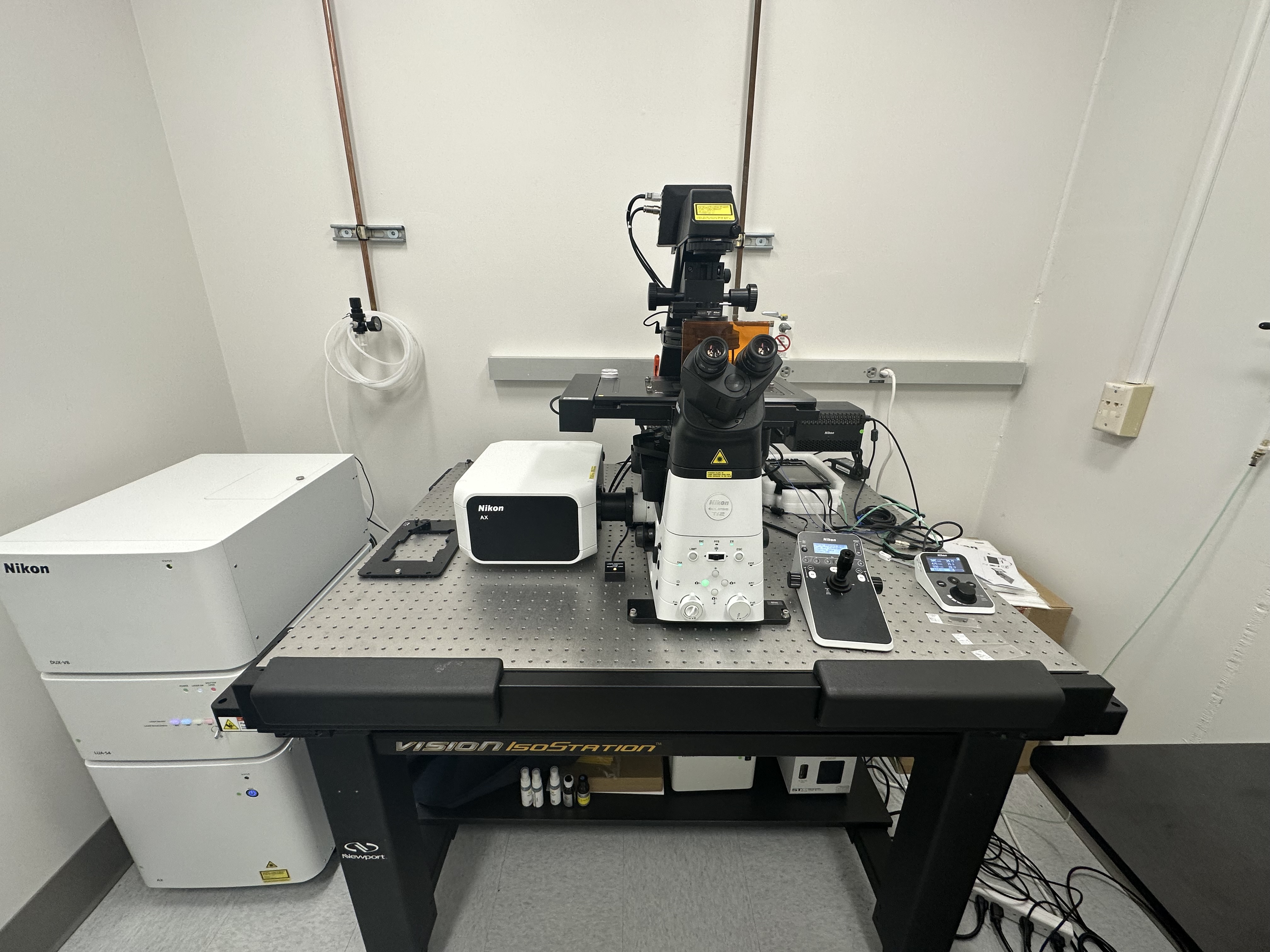Satellite Systems
- CMM-East Widefield
- ACTRI AX R
- CMM-East X1
- Pacific Hall AX R
- Pacific Hall W1 SoRa
 Summary
SummaryNikon’s newest point scanning confocal offering an industry leading 25mm field of view, hybrid spectral and filter-based detection, up to 8K resolution galvo scanning and 2K high speed resonant scanning with 405/488/561/640 excitation. Also offers incubation, DIC imaging, and Z-section capabilities for high-throughput, high-resolution experiments.
|
|
Specifications |
|||
|
Microscope body |
Eclipse Ti2-E |
|||
|
Stage |
Automated |
|||
|
Perfect focus system (PFS) |
Yes |
|||
|
Incubator |
Tokai Hit Stage top (25 – 50 ⁰C, CO 2, and humidity) |
|||
|
Objectives |
Correction, Magnification, Numerical Aperture, Working Distance |
|||
|
Plan Apo ʎD 4x OFN25 NA-0.2 air, WD 20000µm Plan Apo ʎD 20x OFN25 DIC NA-0.8 air, WD 800µm Plan Apo ʎS 40xC silicone NA-1.25 silicone, WD 300µm Plan Apo ʎD 60x OFN25 NA-1.42 oil, WD 150µm Plan Apo 10xC Glyc multi-immersion NA-0.5 WD 5500µm |
||||
|
Software |
NIS elements software (version 5.42.02: High content analysis package) |
|||
|
Lasers |
405 nm, 488 nm, 561 nm, and 640 nm (LUA-S4) |
|||
|
Scanning modalities |
Galvano- up to 8k frame size Resonant- up to 4k frame size |
|||
|
Widefield Light source and Filters |
D-LEDI-C Flourscence LED illumination system |
|||
|
Excitation |
Emission |
Dichroic mirror |
||
|
DAPI |
350/50nm (325-375nm) |
460/50nm (435-485nm) |
400nm |
|
|
GFP |
470/40nm (450-490nm) |
525/50nm (500-550nm) |
495nm |
|
|
Ds Red |
545/30nm (530-560nm) |
620/60nm (590-630nm) |
570nm |
|
|
Detectors |
DUX-VB 418-475 nm multi-alkali PMT 400-750nm GaAsP variable range (typically 499-543 nm, 571-625 nm) 655-850 nm GaAsP |
|||
|
Dichroic mirrors |
405/488/561/640 |
|||
|
Beam splitter |
80/20 |
|||
|
Spectrum scanning |
400 – 750 nm bandwidth of 5, 10, 20, 40nm 9-70 channels 32PMT detectors |
|||
Pacific Hall 3225A